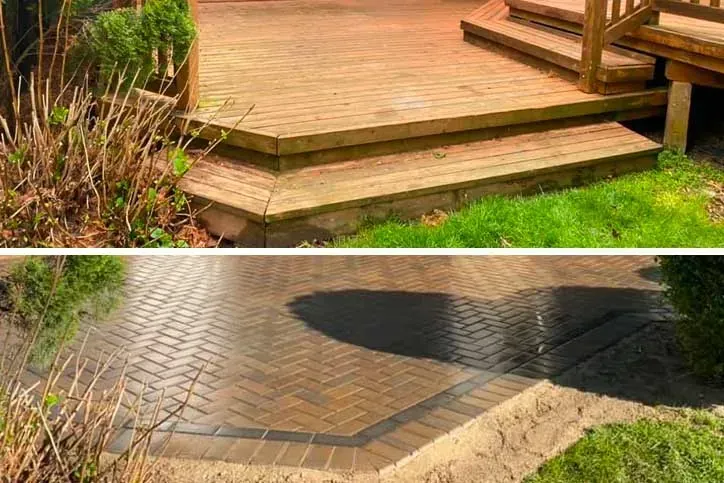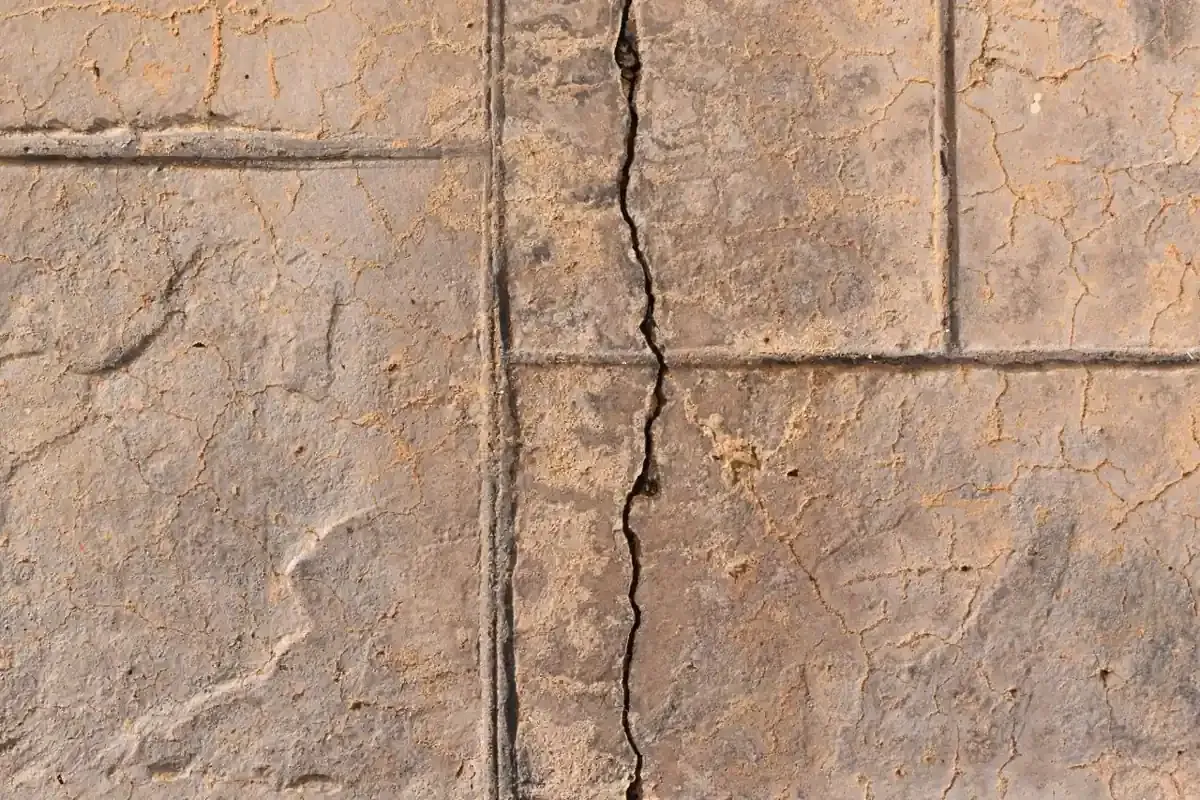Why Concrete Patios Are Better Than Wood Decks in the Long Run
Choosing between a concrete patio and wood deck represents one of the most significant decisions homeowners face when planning outdoor living spaces. While wood decks offer traditional charm and initial appeal, concrete patios provide superior long-term value through exceptional durability, minimal maintenance, lower lifetime costs, and greater design flexibility. Understanding the comprehensive advantages of concrete helps Frisco homeowners make informed investments that enhance their properties for decades rather than requiring replacement after just 10 to 15 years.
Durability That Stands the Test of Time
Concrete patios outlast wood decks by substantial margins. Properly installed concrete surfaces last 30 to 50 years or more with basic maintenance, while wood decks typically need replacement after 10 to 20 years depending on wood type and maintenance diligence. This dramatic longevity difference means homeowners investing in concrete patios may never need replacement during their property ownership. Texas weather challenges outdoor structures with intense heat, UV radiation, heavy rain, and occasional freezing temperatures. Concrete withstands these conditions far better than wood. Summer heat that warps, cracks, and fades wood boards barely affects properly finished concrete. Rain that causes wood to rot, swell, and deteriorate simply runs off sealed concrete surfaces. Termites and carpenter ants destroy wood decks throughout Frisco, causing thousands of dollars in repair costs. These pests tunnel through support posts, joists, and decking boards, compromising structural integrity and creating safety hazards. Concrete remains completely immune to insect damage, eliminating this expensive and frustrating problem entirely.
Maintenance Requirements and Costs
Wood deck maintenance demands significant time, effort, and money throughout the deck's lifespan. Annual tasks include power washing, sanding rough spots, replacing damaged boards, tightening loose fasteners, and applying stain or sealant. Homeowners easily spend $500 to $1,500 annually maintaining wood decks, totaling $10,000 to $30,000 over a deck's 20-year life. Concrete patio maintenance consists primarily of occasional cleaning and periodic sealing every three to five years. Pressure washing removes dirt and debris while resealing protects the surface and maintains appearance. Total maintenance costs over 30 years typically run $2,000 to $4,000, representing dramatic savings compared to wood deck upkeep. Labor requirements differ substantially between materials. Maintaining wood decks involves physically demanding work including sanding, staining, and board replacement. These tasks consume entire weekends and often require specialized tools. Concrete maintenance takes minimal time and effort, usually accomplished in a few hours every few years.
Long-Term Cost Analysis
Initial installation costs for concrete patios and wood decks fall in similar ranges, with both options costing $15 to $30 per square foot depending on materials and complexity. However, lifetime costs tell dramatically different stories when factoring in maintenance, repairs, and eventual replacement. A typical 400-square-foot wood deck costs $6,000 to $12,000 initially. Adding $1,000 annually for maintenance over 15 years totals $15,000. Complete replacement at year 15 adds another $8,000 to $15,000. Total 30-year costs reach $29,000 to $42,000 for a wood deck requiring one mid-life replacement. The same size concrete patio costs $6,000 to $12,000 initially with decorative finishes. Maintenance over 30 years totals approximately $3,000. No replacement occurs during this period. Total 30-year costs run $9,000 to $15,000, representing savings of $20,000 to $27,000 compared to wood decks. Property value considerations favor concrete patios for long-term return on investment. Well-maintained concrete patios remain attractive assets when selling homes, while aging wood decks often become liabilities requiring replacement or price reductions. Buyers recognize concrete's durability advantage and superior condition.
Design Flexibility and Customization

Modern concrete finishing techniques provide design options matching or exceeding wood deck aesthetics. Stamped concrete replicates wood plank patterns, stone textures, tile appearances, and countless other designs. Color options range from earth tones to vibrant hues impossible with natural wood. Shape flexibility gives concrete patios advantages over rectangular deck limitations. Concrete flows into curves, circles, and irregular shapes following landscape contours and architectural features. This design freedom creates custom outdoor spaces perfectly suited to individual properties. Multi-level concrete patios incorporate stairs, sitting walls, and elevation changes just like wood decks but with greater durability and design integration. Concrete levels flow together seamlessly while wood deck level transitions require additional framing and create visual breaks.
Safety and Comfort Considerations
Splinters from aging wood decks injure bare feet, particularly children's tender skin. As wood weathers, fibers separate creating sharp splinters that make decks uncomfortable or dangerous without footwear. Concrete patios never develop splinters, remaining safe for bare feet throughout their lifespan. Slip resistance varies by finish but concrete offers options from highly textured to smooth surfaces based on preference and application. Broom-finished or textured concrete provides excellent traction when wet, while wood decks become slippery when wet or covered with algae, moss, or pollen.
Structural failure risks increase as wood decks age. Rotted support posts, deteriorated joists, and corroded fasteners create collapse hazards, particularly with elevated decks. Concrete patios built on proper bases maintain structural integrity indefinitely without collapse risks. Temperature comfort differs between materials in Texas heat. Wood absorbs and retains heat, becoming uncomfortably hot for bare feet during summer afternoons. Concrete can also heat up but cools faster and offers finishing options reducing heat absorption. Light-colored concrete stays significantly cooler than dark wood.
Environmental Considerations
Concrete production carries environmental impacts through cement manufacturing, but its exceptional longevity provides offsetting benefits. One concrete patio lasting 50 years consumes fewer total resources than two or three wood deck replacements over the same period. Wood deck environmental impact depends heavily on lumber sourcing. Pressure-treated lumber contains chemical preservatives raising disposal concerns. Even sustainable hardwoods require harvesting, processing, and transportation consuming significant energy. Frequent replacements multiply these environmental costs. Chemical treatments necessary for wood deck preservation introduce pesticides and preservatives into home environments and potentially into soil and groundwater. Concrete requires no chemical treatments for preservation, eliminating these environmental and health concerns.
Professional Installation Quality
Proper installation determines performance for both materials, but concrete installation quality variations affect long-term outcomes more dramatically. Experienced contractors ensure adequate base preparation, proper drainage, appropriate reinforcement, and quality finishing techniques producing patios that last generations. Steadfast Concrete brings expertise in all aspects of concrete patio installation and design to Frisco area projects. Our team understands local soil conditions, climate factors, and design trends creating outdoor spaces homeowners enjoy for decades.
Base preparation creates foundations for durable concrete patios. Proper excavation, base material selection, compaction, and drainage prevent settling, cracking, and premature failure. Shortcuts during this phase guarantee problems regardless of concrete quality.
Conclusion
Concrete patios deliver superior long-term value compared to wood decks through exceptional durability, minimal maintenance, lower lifetime costs, and greater design flexibility. While both options serve similar purposes initially, concrete's 30 to 50-year lifespan versus wood's 10 to 20-year expectancy creates dramatic differences in total ownership costs and homeowner satisfaction. Frisco homeowners investing in outdoor living spaces should carefully consider long-term implications rather than focusing solely on initial costs or traditional preferences. Concrete patios provide modern aesthetics, customization options, and practical benefits that wood decks cannot match while eliminating the constant maintenance burden wood requires.
Contact Steadfast Concrete at (214) 833-6372 to discuss your outdoor living space plans. We'll evaluate your property, explain design options, and provide detailed estimates for creating beautiful, durable concrete patios that enhance your home's value and your family's enjoyment for decades to come.




